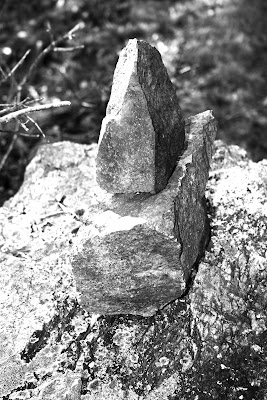
Rebirth

Invitation to Poetry: From Dust to Dust
 ChristineValters Paintner writes: "Lent begins this week. During the imposition of ashes at the Ash Wednesday service some of us will hear the words “from dust you came and to dust you shall return.” The ashes are a tangible reminder of our temporal bodies. I love this beginning to the season of conversion and re-ordering of priorities. The reminder of our mortality is meant to confront us with the preciousness of our days and demands that we ask how we want to spend our time. “Return to me with your whole heart,” says the prophet Joel in the opening scripture for this service. Return, renew your commitment, begin again. This week’s Poetry Party is an invitation to explore through poetic imagery the reality of our shared limits and what stirs in us in response. How does the awareness of Ash Wednesday shape your commitment for the Lenten season ahead?"
ChristineValters Paintner writes: "Lent begins this week. During the imposition of ashes at the Ash Wednesday service some of us will hear the words “from dust you came and to dust you shall return.” The ashes are a tangible reminder of our temporal bodies. I love this beginning to the season of conversion and re-ordering of priorities. The reminder of our mortality is meant to confront us with the preciousness of our days and demands that we ask how we want to spend our time. “Return to me with your whole heart,” says the prophet Joel in the opening scripture for this service. Return, renew your commitment, begin again. This week’s Poetry Party is an invitation to explore through poetic imagery the reality of our shared limits and what stirs in us in response. How does the awareness of Ash Wednesday shape your commitment for the Lenten season ahead?"like dust on molten canvas,
I am. Now
my heart returns to You
Week five: the practice of Lent
Many of the religious traditions practiced today survive from a time when the rhythm of daily life was shaped by the church.[1] They remain as powerful reminders of who we are, of where we come from, and of how we are to live in relationship, connected to the earth, all of its inhabitants, and God. The danger here, as Alexander Schmemann writes in Great Lent, is when “little by little one begins to understand religion itself as a system of symbols and customs rather than to understand the latter as a challenge to spiritual renewal and effort.”[2] For Schmemann, the burning question is: “How can we—besides introducing one or two ‘symbolical’ changes into our daily life—keep Lent?”[3] In determining how to engage with traditional Lent customs in ways that are meaningful in our current lives, we need to understand how the traditions of Lent were originally intended. We then need to consider how these traditions can be practiced in a way that is meaningful to our local communities while also preserving the authenticity of each traditions.
For example, fasting is one tradition that has been changed from generation to generation, at times required, other times banned. In his essay “The Three Days and the Forty Days,” Patrick Regan writes: “The meaning and value of fasting derives from its being the symbol of all that the Church during Lent is and always ought to be: emptied of any pretension to self-subsistence, and filled instead with the Gift and presence of him who is the Church’s life.”[4] Today, the fasting of Lent is traditionally represented by “giving up something you like.” If taken seriously, this could be a powerful practice. But what about adding in something that is hard for you? For example, if you spend most of your waking hours at work, why not commit to dinner with you family during Lent? Or, if you tend to order out or eat prepared dinners, why not commit to preparing (with great care) an evening meal, trying always to invite others to join you? When I think of an alternative to fasting for myself, I remember the meals I’ve eaten oryoki style during sesshin. Compared to them, fasting sounds easy! If the goal of fasting is to empty ourselves out and to make space within ourselves for God, alternatives to fasting would include any practice that encourages us to pay deep attention to the role of consumption in our lives.
In our current culture of busyness and individualism, I have found the qualities of love and care-taking (for both self and others) to be quite revolutionary. Lent is “sober, reflective, and watchful”[5] but this doesn’t mean that we have to treat ourselves harshly. Rather, Lent calls for us to treat ourselves and each other with great care. “‘The discipline of the forty days should heal us and restore the purity of our minds,’” writes Pope Leo the Great.[6] And as the Handbook reminds us, the discipline of Lent is meant sustain and refresh us in preparation for the Easter-Pentecost Season.[7]
Lent is a time for us to slow down and to notice God’s absence. It is a time for us to observe where we have turned away from God and to pay attention to those things we hide behind both individually and collectively. This process of purification includes the practice of fasting (which, in itself, includes various forms), the practice of clearing and planning a garden plot, the practice of reflective journaling, expressive dance, silent meditation, communal prayer, song and so on. What is important here is that we recognize our patterns of relating, paying attention to what works and what doesn’t. Then through our reflective practices, we work toward shifting what doesn’t work and emptying out new space for growth. Spring is on its way!
[1] Ibid. 87
[2] Ibid., 90
[3] Schmemann 87
[4] Regan 134
[5] Handbook 109
[6] Regan 130
[7] Handbook 106-107
"I live my life"


I Live My Life
I live my life in growing orbits,
which move out over the things of the world.
Perhaps I can never achieve the last,
but that will be my attempt.
I am circling around God, around the ancient tower,
and I have been circling for a thousand years.
And I still don't know if I am a falcon,
Or a storm, or a great song.
Rainer Maria Rilke / 1899
from Book for the Hours of Prayer
translated by Robert Bly
Sculpture: twig art

Reflections on Week One: Historical and Theological Groundwork
For example, the Christian Pentecost, held on the same day as the Jewish Pentecost, commemorates the descent of the Holy Spirit over the Apostles and the subsequent birth of the Christian church. On this day of celebration and remembrance, the spiritual birth of new Christians (baptism) is also celebrated.[1] Through connecting with and reincorporating traditions of the past into the present, we are more deeply rooted in this time and place. The tradition of Sunday worship is another example of this. While it reminds Christians of past events, it also celebrates their present experience of communion in Christ.[2]
With the support of these temporal and spatial structures, the realities most central to the church—manifestation, resurrection, and the indwelling spirit—are manifest.[3] Prayer cycles and sacred space help to extend prayer into all parts of the practitioner’s life. These practices remind me of how, in the practice of meditation, we pause in our day to focus on the breath. We are always breathing but in drawing our attention to the breath, we breathe more deeply. In pausing to sit on a cushion, we become more aware of ourselves in relation and attentive to the spaces in between. Likewise, the scheduled practice of prayer and the Christian use of space directly impact how we live our lives, helping us to be, most fully, human. Clement of Alexandria writes: “‘Holding festival, then, in our whole life, and persuaded that God is altogether on every side present, we cultivate our fields, praising; we sail the sea, hymning.’”[4]
As the rhythm of Christian prayer and the cycles of worship strengthen the connection between self and God, the sacred spaces of worship help to ground the human self in being. In other words, sacred spaces draw us inward and cultivate our sense of rootedness in the world. They also open our eyes to that which is greater than and beyond human comprehension. Thus reminding us of our partiality, sacred spaces encourage us to live responsibly in this particular time and place.[5] In his essay, Creatures of Place and Time: Reflections on Moving, Gilbert Meilaender reminds us: “to give ourselves to no one and no place in particular is not to be more like God; it is just to fail as a human being.”[6] The Christian use of temporal and spatial structures helps us, as human beings, to understand and to actualize our proper place in creation.
[1] The New Handbook of the Christian Year 21
[2] Bradshaw 77
[3] Handbook 24
[4] Bradshaw 73
[5] Here I draw upon the ideas of Wendell Berry: …No matter how much one may love the world as a whole, one can live fully in it only by living responsibly in some small part of it. Where we live and who we live there with define the terms of our relationship to the world and to humanity. We thus come again to the paradox that one can become whole only by the responsible acceptance of one’s partiality…” (The Unsettling of America 123).
[6] Meilaender, 18: Meilaender, Gilbert. 1997. “Creatures of Place and Time: Reflections on Moving.” First Things, April: 17-23.
About this blog
(1) a focus on one element or cluster of elements in the Christian year;
(2) a fieldwork component, in which observation, interview, or like methods are employed;
(3) an historical component, placing the case in the context of the Christian year generally and the relevant tradition in particular; and
(4) a theological argument, drawing on resources examined in the course.
The professor is encouraging special attention to 'the arts' and is allowing for an alternative to the standard academic paper. I haven't yet decided on the format for my final project though I am leaning toward a photo essay (I've never done one and will have to research what exactly the phrase "photo essay" encompasses before deciding). In the meantime, I plan to use this space for my thoughts and reflections and hopefully some conversation and sharing of ideas...




